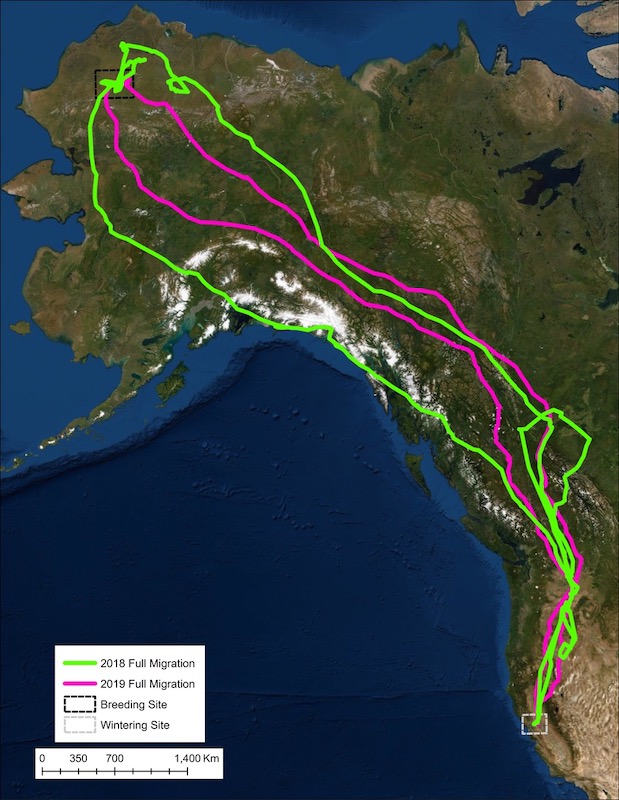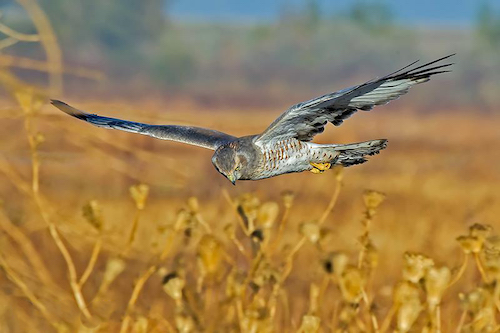Northern Harriers – The interesting life of a Marsh Hawk
By Luke Matthews
Northern Harriers are a common sight throughout the Sacramento Valley. Unlike many other raptors, males and females of this species are dimorphic, which means that they have different color patterns. Females are generally dark brown across their back and wings, with beige bellies and a distinct white band on their rump. In contrast, while males also have the white rump patch, they are gray overall with white bellies and black wing tips.
These Harriers are common across North America and they are adapted to living in wetlands, marshes and grasslands. In fact, they are so well adapted to these habitat types that they build their nests and raise their young on the ground. Furthermore, they rarely perch on elevated structures such as fences, trees, and telephone poles but prefer to stand on the ground when not flying. Harrier diets primarily consist of small mammals, snakes, and small birds. However, they also scavenge and hunt larger birds that might be wounded or sick, as is depicted in the photo series below.
Recent research conducted at the US Geological Survey (USGS), by Shannon Skalos, captured and marked Northern Harriers in the Suisun Marsh. This research has expanded our understanding of Harrier migrations. They have discovered that we have at least two different ‘populations’ of Northern Harriers in California: a resident population and a migratory one. The migratory birds winter in the Suisun Marsh and breed across at least five western states: Northern California, Oregon, Washington, Idaho, and Alaska. They have also documented the longest migration of a Northern Harrier, where the same female traveled between Suisun Marsh and the North Slope of Alaska two years in a row! You can see a map of her migratory path below.

Image courtesy of USGS: data is preliminary and subject to change.
The next time that you are out in the Sacramento Valley and see a Northern Harrier flying over a rice field do not take them for granted. Instead, consider all of the places that bird may have visited, eaten, or raised its young.
Luke Matthews is the Wildlife Programs Manager for the California Rice Commission










